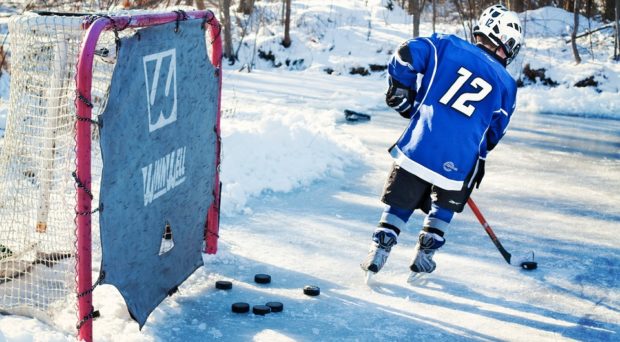
Sport-related concussion is a serious problem in both amateur and professional sports. Children and adolescents in particular are highly vulnerable to concussions. As a physiatrist, I think we need better tools to assess short and longer terms consequences of concussions.
As all of us know, the practice of regular exercise has significant health benefits, but when children or adults are playing sports and competing with others, the chances of getting injured are increased. Head impacts are very frequent in some sports like hockey or football and when there is hard head impact, people can have what we call a concussion or mild traumatic brain injury.
A concussion is a brain injury caused by a mechanical force transmitted to the head, which results either in a collision between the brain and skull or in a strain on the neural tissue and vasculature. The acute signs and symptoms of concussion are similar in children and adults and can include loss of consciousness, amnesia, headaches, drowsiness, irritability, slowed reaction times and emotional lability among others.
It is important to know that concussions are common in childhood and, most of the time, do not lead to serious problems. We should keep in mind, however, that not all concussions have the same presentation and symptoms may be so insignificant that they can almost be unnoticed. The injury itself, for example, can cause the child to notice that something is different but he/she is not able to identify the symptom(s).
It is important to know that concussions are common in childhood and, most of the time, do not lead to serious problems.
Usually, the majority of concussions resolve spontaneously in 7-10 days. However, some of the symptoms may linger; such as difficulty in processing information, impaired judgment and reasoning. Recovery after a concussion is very different in children when compared with adults probably because the higher “plasticity” of their young brains makes them to have a greater ability to recover.
On the other hand, the functional impact can be also very different because the brain of a child is continuing to develop. The impairments of children may not be obvious after the injury but may become apparent as the child grows up. Some children may have lifelong physical and cognitive challenges.
Currently, we do not have a specific and sensitive measurement tool that can identify impairments following concussions. We use observer-based scales, tests and questionnaires to evaluate sensorimotor and cognitive symptoms such as memory and learning deficits. We also can use magnetic resonance imaging (MRI) to see areas of diminished white matter.
In the paper, the authors are looking at the association between the robotic test results and history of concussions in children/adolescent ice hockey players. The robot that they use is called the KINARM exoskeleton. This robot includes a virtual reality system that displays visual target in the same plane at the arms, allows free movement of the arms and provides force feedback. It measures sensorimotor and cognitive outcomes. The KINARM has been used previously to evaluate functional impairments across neurological domains, including adults that have suffered a concussion.
Their results are in accordance with the fact that most concussions are resolved in a short period of time.
The authors evaluated the differences in five KINARM task outcomes between 94 children and adolescents (ages 10-14) ice hockey players with a history of concussions and 292 without it. Also, reference ranges for parameters associated with the five KINARM robotic tasks that assess reaching, position sense, bimanual motor function, visuospatial skill, attention and decision making are provided.
After the analysis of the data, they report that there are no significant differences in performance, as assessed by individual robotic tasks between those with and without concussions.
Their results are in accordance with the fact that most concussions are resolved in a short period of time. However, as the authors have acknowledged, there are several limitations in the study because of the issue of recall bias (concussions were reported by parents) and also because of the possibility of undiagnosed concussions in athletes. Reference ranges that the authors have established for the mentioned robotic tasks for this age group will be useful for comparisons with future studies.
I believe that it will be great, if the technology is available, to use the robotic device for the diagnosis and maybe prognosis of children with concussions that attend the clinic. I also believe that larger research studies are needed to more definitively evaluate the potential of robotic technology to address issues related to diagnosis and management of concussion.
Comments